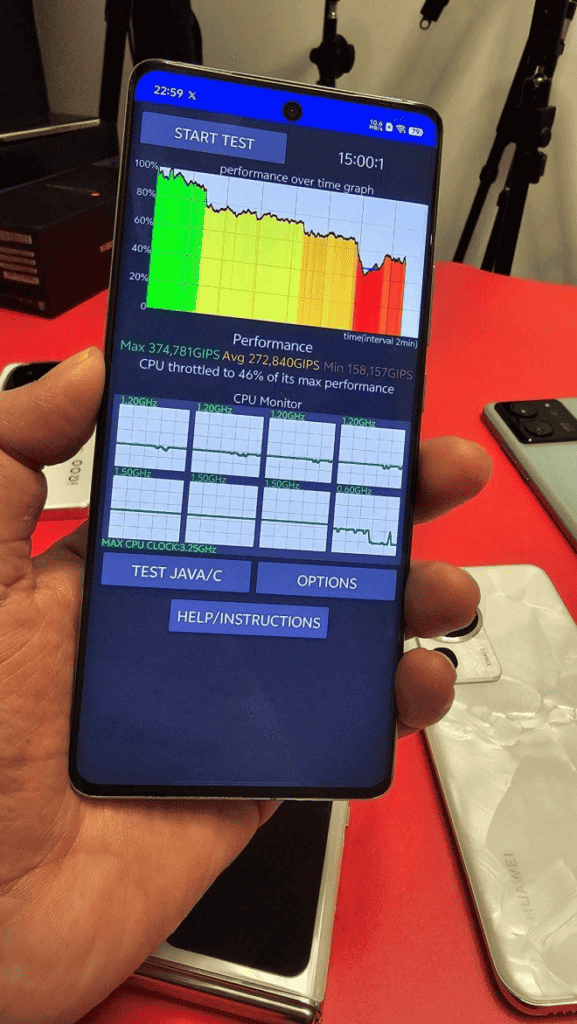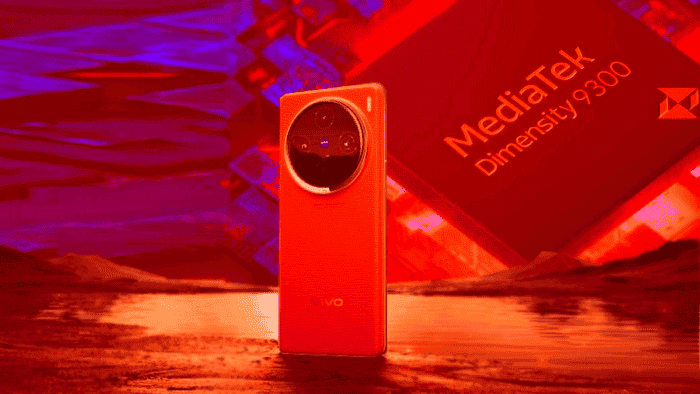When MediaTek unveiled the Dimensity 9300 it took the world by storm with the reveal of a performance cluster powered with four Cortex-X4 cores. So far, the high-performance Cortex-X cores were found alone in most of the recent flagship chipset arrangements. However, with its latest flagship SoC, MediaTek decided to raise the number from one to four. This could mean a whole new level of performance, but at the same time, it would require more effort to keep the thermals low. With the release of the Vivo X100 Pro as the world’s first MediaTek Dimensity 9300, the first benchmarks appeared showing how this chipset performs in real life. (Source).
The Vivo X100 Pro – A Brief Recap of The Specifications
The Vivo X100 Pro launched earlier this month and we can refresh your memory on its specs. The smartphone is equipped with a 6.78-inch AMOLED screen with a 120 Hz refresh rate and 2,800 x 1,260 pixels of resolution. Under the hood, we have the Dimensity 9300 alongside the Immortalis-G720 MC12 GPU. It has up to 16 GB of RAM and 1 TB of Internal Storage. In terms of optics, the Vivo X100 Pro has a triple 50 MP camera array with OIS.
The Vivo X100 Pro has stereo speakers, Wi-Fi 7, and Bluetooth 5.4. The device has NFC, IR Blaster, and USB Type-C 3.2. It also has an under-display fingerprint scanner, a 5,400 mAh battery with 100W wired charging and 500W wireless charging.
The MediaTek Dimensity 9300, which arrives as a “Performance-Focused” chipset drew the attention here. After all, it was our first opportunity to see a chipset that ditches the efficiency-focused Cortex-A520 cores. The new chipset arrives with 4x Cortex-X4 cores and 4x Cortex-A720 cores. According to the first CPU stress tests, the chipset throttles performance after some time of usage.
Vivo X100 Pro’s Dimensity 9300 Clock Speed Reaches 0.6 GHz After Stress Test
As we’ve been expecting, it shouldn’t be an easy task to manage thermals with the MediaTek Dimensity 9300. The first Vivo X100 Pro units started to reach testers and one particular result was not so exciting. In a CPU throttling test, the Octa-Core CPU throttled down to 46% of its performance in just 2 minutes. Four of the cores lowered to 1.2 GHz, three to 1.5 GHz, and one to just 0.6 GHz. For context, the MediaTek Dimensity 9300 comes with three distinct clusters. The BIG performance core has 1 x ARM Cortex-X4 core at 3.25 GHz, three MID performance Cortex-X4 cores at 2.85 GHz, and four ARM Cortex-A720 cores clocked at 2 GHz. This chipset does not bring any efficiency Cortex-A520 core.

This is Just One Test – So We Need To Wait To Make conclusions About the Chipset
It’s a bit early to make conclusions on how the MediaTek Dimensity 9300 will perform. For comparison, a phone equipped with Qualcomm Snapdragon 8 Gen 2 runs at approximately 80% performance yield after more than 10 minutes of CPU throttling. Considering how quickly the 9300 throttles the performance, we are curious to see how it would perform after long times of stress.
The CPU throttling test is designed to run all the CPU cores at full blast to see how the phone copes with maximum stress. The Vivo X100 Pro does come with a passive cooling solution. The flagship packs a vapor chamber designed to move heat away from the SoC. This will help maintain balanced thermals, thereby enhancing performance. The experience could be better with devices that have active cooling, like a physical fan. Usually, gaming phones like those on the Nubia Red Magic series bring active cooling solutions. While such devices could potentially offer improved performance with the Dimensity 9300, there is currently no information available regarding the existence of such a device.
A CPU Throttling Test Puts Even the Most Efficient Chips on Knees – It’s important to keep a balanced view
These tests might suggest that the Dimensity 9300 with only performance cores will have some challenges ahead. However, this is not exactly the case! We can’t make conclusions right now. The CPU Throttling Test is meant to put one chipset’s efficiency in check. The Qualcomm Snapdragon 8 Gen 3 or A17 Pro may perform better in this test, but other factors determine how hot a smartphone chipset can get. In hot and humid surroundings, the ambient temperature is higher than most regions, causing the Dimensity 9300 to thermal throttle significantly faster. Perhaps, under normal use, the chipset won’t have major issues with performance and thermals. Of course, this is just the beginning of the road for the Dimensity 9300 and we expect more tests to be carried out later on.

So far the Vivo X100 Pro is the only device in the market with the MediaTek Dimensity 9300. It’s just the beginning for this chipset, and also for the Vivo X100 Pro. Even if the performance throttles right now, both MediaTek and Vivo can push future updates to improve performance and thermal management. We will also see companies working to compensate for the lack of “Cortex-A510” cores, for example, by building larger vapor chambers to push the heat away. The Oppo Find X7, for instance, is another device from the BBK Electronics group to embrace this chipset and it will give us another view of this chipset’s performance.
Conclusion
While MediaTek’s choice of bringing only performance cores to the party is a risky one, we can say that, at least, the company is trying to innovate. There is still a full year for this chipset to prove itself. In any case, the results will determine whether or not MediaTek will repeat this core arrangement with the Dimensity 9400.





